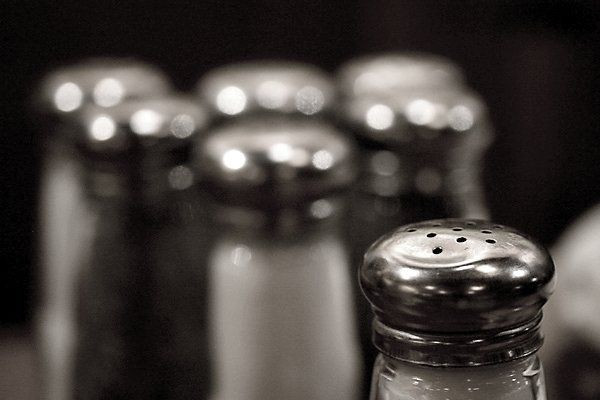CDC: Salt Intake Guidelines Were Wrong; For Most People, No Great Benefit In Dramatically Reducing Dietary Salt

A study commissioned by the Centers for Disease Control and Prevention (CDC) — performed by the Institute of Medicine of the National Academies — has found that there is no benefit of reducing salt intake to below 2,300 mg per day. The report reviewed the health benefits of reducing salt intake, as salt consumption was previously considered a substantial health hazard, particularly to those with high blood pressure.
The study, entitled "Sodium Intake In Populations: Assessment of Evidence," confirms that there is no evidence substantial enough to limit sodium consumption to less than 2,300 milligram daily for most Americans — or approximately one teaspoon of iodized salt.
The report also discusses emerging debates about the proper level of dietary sodium intake. "Despite efforts over the past several decades to reduce sodium intake in the United States, adults still consume an average of 3,400 mg of sodium every day," the researchers wrote.
Clearly, the average intake far exceeds the daily recommended cap of 2,300 milligrams, but based on the new findings, dramatically reducing salt intake isn't as important as once thought. "The committee found no consistent evidence to support an association between sodium intake and either a beneficial or adverse effect on most health outcomes," the researchers wrote.
"With governments setting ever lower targets for salt intake and food manufacturers working to remove it from their products, it's really important that we do some large research trials to get a full understanding of the benefits and risks of reducing salt intake," said lead author Rod Taylor of Exeter University.
As the most common and easy accessible nonmetallic material in the world, salt is easily found in soups, chips, drinks, and other pantry items. So, lowering salt intake could be a greater inconvenience than it is a health benefit.
Dangers of Too Much Sodium
Still, a high-salt diet isn't good for anyone. The national dietary guidelines previously suggested to stay around 1,500 milligrams of sodium a day — a little more than half a teaspoon of salt — in order to prevent heart attacks and strokes in people at risk, though the new evidence from the CDC sheds doubt on whether or not restricting salt below 2,300 milligrams will equal a healthier diet and lower previously associated risks.
Nevertheless, high blood pressure remains a risk factor for high-sodium diets, and those with high blood pressure should not consume more than the suggested daily salt intake. In a 2011 study, 28,800 subjects with high blood pressure ages 55 and older were analyzed for almost five years. Their risk of heart attacks, strokes, congestive heart failure, and death from heart disease increased significantly when they consumed more than 7,000 milligrams of sodium a day or consumed less than 3,000 milligrams of sodium a day. As lower sodium levels decrease, triglyceride levels increase, which leads to increased insulin resistance and thus increased risk of heart disease.
More research needs to be conducted on the long-term effects of salt consumption, however.
The Most Common Myths And Misunderstandings Of Salt Intake, According To The CDC:
1. Salt and sodium are the same: False, even though these words are sometimes used synonymously, they are not the same thing. The Nutrition Facts panel you can find on the back of mostly any product will use the word "sodium," whereas the package may be advertised as "low salt" — blurring the fact that salt is made up of sodium and chloride.
2. A muffin can easily contain more salt than a bag of chips: True, salt is hidden in sweet, salty, sour, and bitter foods — such as salad dressings, cheeses, pasta sauces, breads, and condiments.
3. Most of the sodium we consume is added to our food from a salt shaker during home cooking: False, only a small amount of sodium is added to our diet by the salt used during the cooking process or while eating at the kitchen table. Processed and restaurant foods account for 75 percent of our sodium consumption, which is why it's so important to limit eating out, especially at fast food restaurants.
Source: Strom BL, Yaktine AL, Oria M, et al. Sodium Intake in Populations: Assessment of Evidence. The National Academies Press. 2013.



























